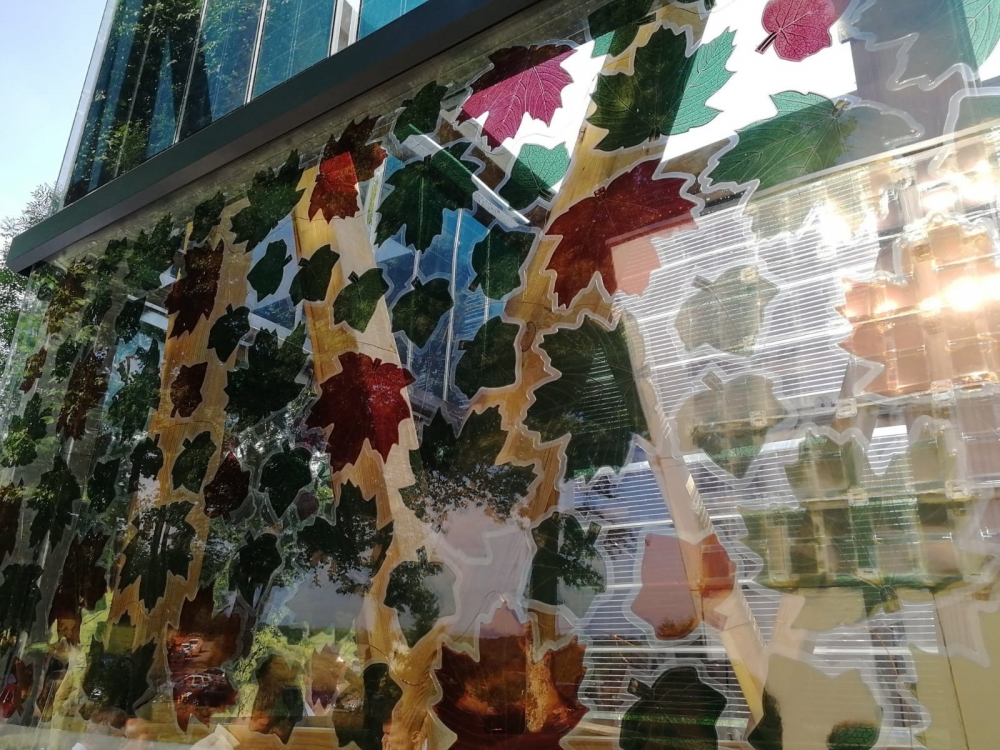Chasing Higher Efficiency

Researchers at UC Santa Barbara and eight other institutions have identified a key mechanism responsible for the lower efficiencies of organic solar cells and have demonstrated a way this hurdle might be overcome. Their results, reported in the journal Nature, suggest the possibility of developing organic solar cells with efficiencies comparable to silicon-based cells.
The team identified a pathway in organic solar cells where current is lost, which makes them less efficient than silicon-based cells at converting sunlight into electricity. They discovered a way to suppress this by manipulating molecules inside the solar cell to prevent an undesirable state leading to lost current. “It is an extensive work that took a long time to collect data,” said Thuc-Quyen Nguyen, a professor at UC Santa Barbara and one of the study’s corresponding authors. Reviews and revisions alone took a year and half, she added.
Organic solar cells are flexible, lightweight, semi-transparent and cheap — features that mean the cells could greatly expand the range of applications for solar technology. For example, organic solar cells could be wrapped around the exteriors of buildings or coat glass windows and greenhouses to generate energy for indoor lighting, neither of which are possible with conventional silicon panels. They also are far more environmentally friendly to produce. For instance, they are 1,000 times thinner than silicon solar cells and can be produced at low temperature via solution processing methods like printing, roll-to-roll coating, spraying and so forth.
“Organic solar cells can do lots of things that inorganic solar cells can’t, but their commercial development has plateaued in recent years, in part due to their inferior efficiency,” said first author Alexander Gillett from Cambridge’s Cavendish Laboratory. “A typical silicon-based solar cell can reach efficiencies as high as 20 to 25%, while organic solar cells can reach efficiencies of around 19% under laboratory conditions, and real-world efficiencies of about 10 to 12%.”
Organic solar cells generate electricity by loosely mimicking the natural process of photosynthesis in plants, except they ultimately use the energy of the sun to create electricity rather than convert carbon dioxide and water into glucose. When a photon hits a solar cell, it excites an electron and leaves behind a ‘hole’ in the material’s electronic structure. The combination of this excited electron and hole is known as an exciton. If the mutual attraction between the negatively charged electron and the positively charged hole can be overcome, it is possible to harvest these electrons and holes as an electrical current.
However, electrons in solar cells can lose their energy and fall back into the empty ‘hole’ in a process called charge recombination. Organic solar cells are more prone to recombination since there is a stronger attraction between the electron and hole in carbon-based materials than in silicon. This in turn affects their efficiency. Researchers use two components to prevent the electron from recombining with the hole: a donor material, which contributes electrons, and an acceptor material, which takes up electrons to generate and transport charges.
Using a combination of spectroscopy and computer modeling, the researchers were able to track the mechanisms at work in organic solar cells, from the absorption of photons to recombination. They found that a key loss mechanism in organic solar cells is caused by recombination to a particular type of exciton, known as a triplet exciton.
In organic solar cells, triplet excitons present a difficult problem to overcome, as they are energetically favourable. The researchers found that by engineering strong molecular interactions between the electron donor and electron acceptor materials, it is possible to keep the electron and hole further apart, preventing the triplet excitons from forming.
The project began with a collaboration between the UC Santa Barbara and Cambridge teams. “I was so surprised when Alex shared the result on an analysis of a blend system developed at UCSB that showed it was possible to eliminate the triplet exciton loss,” Nguyen said.
Nguyen encouraged Gillett to analyze several other blends to make sure the result was universal. It took more than two years for him to collect the data with six research teams working together. “This work highlights the importance of collaborative research to advance science,” she added.
“The fact that we can use the interactions between components in a solar cell to turn off the triplet exciton loss pathway was really surprising,” said Gillett. “Our method shows how you can manipulate molecules to stop recombination from happening.”
The researchers say their method provides a clear strategy to achieve organic solar cells with efficiencies of 20% or more by stopping recombination into triplet exciton states. As part of their study, the authors were also able to provide design rules for the electron donor and electron acceptor materials to achieve this aim.
The next hurdle for the field is to improve the lifetime of organic solar cells. The team is currently working to solve this problem via materials engineering.
“Now, synthetic chemists can design the next generation of donor and acceptor materials with strong molecular interactions to suppress this loss pathway,” Nguyen said. “This work shows the path forward to develop organic solar cells with efficiencies closer to silicon-based cells.”





